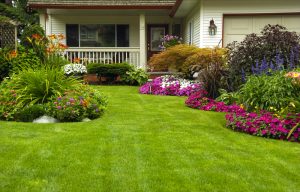After the dreary winter, homeowners across New Jersey are ready for summer — as are their yards. The sunny days and warmer temperatures are the perfect opportunities to get your yard summer-ready, and there is a science and an art to getting the perfect yard. From prevention to preparation, we’ve got you covered with the top three things you need to do today to ensure a healthy, lush lawn all summer long.
 Study Your Soil
Study Your Soil
Before taking steps to plant, check your soil. Yes, you can test for acidity with a kit, or you can do a quick at-home test to see if your soil is alkaline or acidic, which is important to know when you start choosing plants.
Type of Soil
You can add two spoons of soil to a half-cup of vinegar. If it fizzes, you have alkaline soil. If it doesn’t, add enough distilled water to make mud, and then add a half-cup of baking soda. If this soil fizzes, you have acidic soil. If you have no reaction to either test, you have neutral soil.
Detailed Info
The Natural Resources Conservation Service offers a Web Soil Survey that provides more detailed information on the soil composition of specific areas of interest. You can select your location and download a report that includes information about the type of soil, slope, and more. Test the moisture levels by squeezing a handful of soil. If water drips, the soil is too moist; if it crumbles, it’s ready to till.
Back to Basics
Certain components are crucial for your yard’s overall health, such as these following concepts for a better lawn.
Air
Aerating your yard helps to turn over the soil, promote healthy root formation and allow water and other nutrients to reach the lawn’s root system. While you should plan to aerate your yard at least once a year, you may find some areas require more treatments.
Water
Make sure your yard is well watered by providing grass with one deep soak that penetrates to a depth of at least an inch each week. This is a key component for deep root growth and healthy grass.
Cleaning
From raking up the excess growth of dead winter foliage and the leftover leaves from the fall to removing overgrown thatch so that air can get to the grass, it’s vital that you spend time cleaning the yard. Remove weeds from the root, and prune and trim any dead branches and leaves from shrubs and trees.
Nutrients
Compost is a great way to promote healthy beds. Whether you are planting edibles or flowers, providing soil with nutrients and care now could give you a higher yield of healthy plants later. Look into neutralizing your soil, now, too. Certain plants thrive in acidic or alkaline environments, but most prefer neutrality. Also, consider adding fertilizer applications.
Plan Ahead
Plan ahead and make the bed — your planting beds. After you’ve removed all of the weeds and tilled the ground, add more compost. This is the perfect time to plant annuals and the more delicate perennials. Lay down about three inches of mulch around any new plants. The mulch will not only prevent weed growth but can help control the soil temperature and moisture, as well as preventing any damage to the new plant.
Prepare for pests
Springtime typically brings out the nuisance animals and bugs in New Jersey. Look into the fencing that will keep your plants safe and consult a professional landscaper who can help you plan your yard with plants that naturally detract these animals.
Keep an eye on new neighbors
After the black swallow-wort invasion that has been taking over New Jersey the past few years, it’s important for you to know what’s growing in your yard. Some estimates show that the state has spent more than $290 million a year to combat the plant. Other species that have taken over the state include insects like the Asian longhorned beetle and wooly adelgid and plants like the purple loosestrife and Japanese barberry. If you see something suspicious, check out the New Jersey Invasive Species Strike Team.
Create a landscaping plan
It’s a great idea to think about what you want to plant, and where you want each piece placed. Leave space for each plant to grow. When you put down on paper exactly what you’re hoping to achieve, you’ll be able to budget your finances and time. Consult with a professional who has in-depth knowledge of the area and the plants that thrive best in your city.
Thank you for reading our blog! How can we help you? Contact us today.
